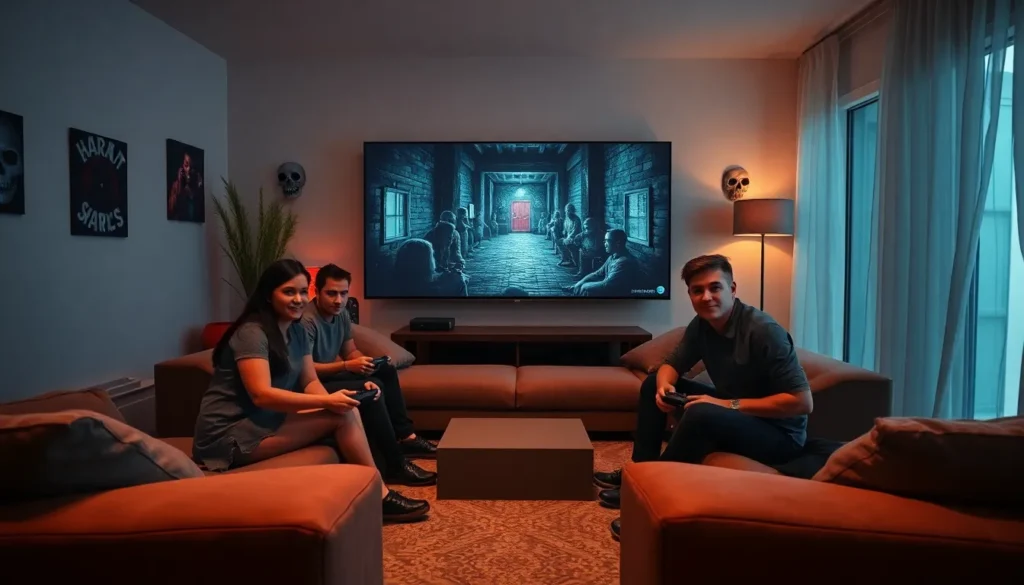In a world where Pikachu’s cuteness meets the fierce elegance of Charizard, understanding the Pokémon art style is like discovering the secret recipe for a perfect Poké Ball. This guide isn’t just for aspiring artists; it’s for anyone who’s ever wanted to capture the magic of Pokémon in their own unique way. Whether you’re doodling in a notebook or crafting the next big fan art masterpiece, knowing the ins and outs of this vibrant style can elevate your creations from “meh” to “Mewtwo-level amazing.”
Table of Contents
ToggleOverview of Pokémon Art Style
Pokémon art style features a unique blend of cuteness and sophistication, captivating artists and fans alike. Color plays a crucial role in this aesthetic, with vibrant palettes bringing characters to life. Gentle curves and exaggerated features enhance the innate charm of Pokémon, inviting users into their whimsical world.
Character design remains a cornerstone of this art style. Designers often focus on simulating a sense of personality through visual elements, such as distinctive shapes and expressive eyes. These aspects contribute significantly to the characters’ overall appeal.
Line work in Pokémon illustrations typically employs clean and bold strokes. This technique emphasizes the characters and makes them stand out in various settings, whether in animation or video games. Artists often prioritize using smooth outlines to convey motion and fluidity.
In addition, textures represent another essential element in the Pokémon art style. Artists utilize textures to depict different materials, like fur, scales, or shells, creating a more immersive experience. The balance between flat colors and detailed patterns enriches the artwork while maintaining visual clarity.
Lastly, backgrounds often complement the characters without overpowering them. Simple environments with soft gradients or subtle details help focus attention on the Pokémon themselves. Creating a harmonious relationship between the characters and their surroundings elevates the overall composition.
Understanding these core aspects fosters appreciation for the Pokémon art style. Aspiring artists can effectively incorporate these elements into their creations, producing art that resonates within the beloved Pokémon universe.
Key Elements of Pokémon Art Style
Understanding the key elements of Pokémon art style is essential for capturing its unique charm and appeal. The style showcases a balance of creativity and playfulness, appealing to audiences of all ages.
Character Design Principles
Character design emphasizes distinct shapes, sizes, and features that convey individual personalities. Traits like large expressive eyes and rounded forms enhance the cuteness factor. Designers often utilize exaggerated proportions to create memorable characters. Each Pokémon embodies specific traits that reflect its type and abilities, facilitating instant recognition. For instance, water-type Pokémon may feature aquatic elements, while fire-types boast fiery aesthetics. Consistency in details across variations ensures a cohesive visual identity, making characters relatable and endearing.
Color Palette and Usage
Color plays a vital role in defining the Pokémon universe. Bright, vibrant colors draw attention and evoke emotions, enhancing the character’s personality. Warm tones often represent friendly characters, while cooler hues may signify mystery. Strategic color combinations create visual harmony and contrast, enriching overall artwork. Moreover, using specific palettes to match environments or themes strengthens storytelling. For example, lush greens and earthy tones highlight a forest setting, complementing the Pokémon’s natural habitat. Balancing color saturation and brightness maintains clarity and visibility, making the art appealing and engaging.
Techniques for Artists
Artists aiming to capture the essence of Pokémon can use specific techniques to enhance their artwork. Mastering these methods enriches the creative process.
Drawing Pokémon Creatures
Start with simple shapes to establish a rough outline, ensuring the character’s proportions reflect its personality traits. Exaggerated facial features, particularly eyes, contribute to cuteness and expressiveness. Vary the line thickness, using bolder lines for outlines and finer lines for internal details, which adds depth to the design. Experiment with textures to differentiate between fur, scales, or other elements specific to each Pokémon. Familiarity with the Pokémon types aids in incorporating distinct traits that resonate with fans, creating recognizable and engaging designs.
Background and Environment Design
Designing the background involves selecting colors that harmonize with the Pokémon character, avoiding overwhelming contrasts. Implement minimalistic elements that enhance the scene without overshadowing the main subject. Use effective perspectives to create depth, allowing for a sense of immersion in the Pokémon world. Incorporate thematic elements reflecting the character’s environment, like forests, caves, or oceans, which reinforces storytelling. Adjust details according to the Pokémon type to maintain coherence and visual appeal throughout the artwork, allowing viewers to lose themselves in the Pokémon universe.
Applications of the Pokémon Art Style Guide
The Pokémon art style guide finds diverse applications, enhancing various forms of media and merchandise. Several dimensions emphasize its significance.
Merchandise and Branding
Merchandise leverages the distinctive Pokémon art style to capture consumer interest. Toys, clothing, and accessories incorporate vibrant colors and character designs that resonate with audiences. Characters feature appealing, recognizable forms, ensuring the brand remains consistent across products. Additionally, bold line work makes merchandise visually striking, enhancing shelf appeal. Effective branding utilizes the art style to evoke nostalgia, attracting both new fans and long-time collectors. Using familiar traits fosters engagement, making the merchandise more desirable.
Video Game Graphics
Video game graphics benefit immensely from the Pokémon art style. Developers design characters with exaggerated features that enhance expressiveness and relatability. Clean lines and vivid colors bring the Pokémon world to life, creating immersive experiences. Character animations reflect personality traits through fluid movements, enriching gameplay. Environments also mirror the art style’s principles, balancing detail with simplicity. Harmonious color palettes ensure that backgrounds support the characters without distraction. These elements work together, forging a unified aesthetic that defines the Pokémon gaming experience.
Mastering the Pokémon art style opens up a world of creative possibilities for artists and fans alike. By embracing the unique characteristics of color, character design, and composition, individuals can create captivating artwork that resonates with the essence of the Pokémon universe.
The techniques discussed provide a solid foundation for anyone looking to express their love for Pokémon through art. Whether it’s for personal enjoyment or professional projects, understanding these core elements can lead to truly impressive creations. With practice and dedication, artists can bring their visions to life while celebrating the charm and vibrancy that defines this beloved franchise.










